 W
WAnsonia kraensis is a species of toads in the family Bufonidae. It is found on the Kra Isthmus, Thailand. It is morphologically similar to Ansonia malayana from Malaysia, but differs from it in ventral coloration and larval morphology. The exact threats are unknown but are likely forest loss for logging and agricultural expansion.
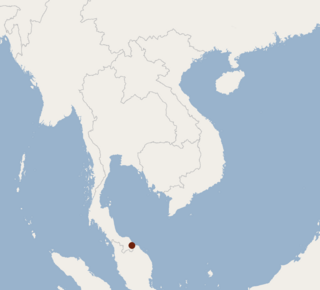 W
WThe Bala tube-nosed bat is a critically endangered species of bat found in Thailand.
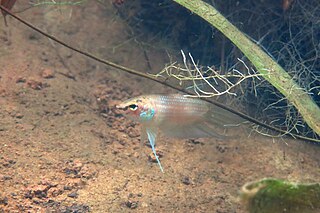 W
WBetta ferox is a species of gourami endemic to Thailand. It is only found in rivers in Songkhla Province, where it resides along shallow riverbanks among vegetation. This species grows to a length of 6.3 centimetres (2.5 in) SL. This species is closely related to Betta pugnax and is also a paternal mouthbrooder. Males and females are dimorphic, with males displaying elongated ventral fins, elongated caudal fins, and green coloration on the gill plates. Females typically display two horizontal brown bars across their bodies, shorter fins, and a more rounded body shape.
 W
WChalcorana eschatia is a species of "true frog" in the family Ranidae. It is known from southern Thailand, but is likely to be more widespread. It was split off from Chalcorana chalconota by Robert Inger and colleagues in 2009, along with a number of other species in so-called "Rana chalconota group". The specific name eschatia, derived from the Greek word for "outskirt", refers to distribution of this species being at the edge of the geographical range of the group.
 W
WCyrtodactylus lekaguli is a species of gecko that is endemic to Thailand.
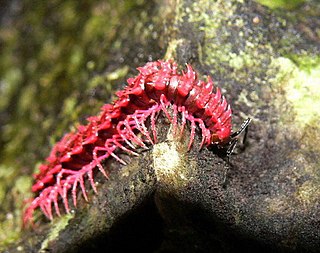 W
WDesmoxytes purpurosea also known as dragon millepede, is a spiny and toxic millipede named for its vivid pink color. It was formally described in 2007 from a specimen collected at the Hup Pa Tard limestone cavern in the Uthai Thani Province of Thailand. Among the largest species of its genus, the adult millipede is approximately 3 cm (1.2 in) long. It lives in the open on leaf litter. Large numbers of them occur after rain showers. The millipede has glands that produce hydrogen cyanide to protect it from predators, which causes it to smell like almonds. Its toxicity is advertised by its aposematic color.
 W
WDixonius hangseesom is a species of lizard in the family Gekkonidae. It is endemic to Thailand.
 W
WHemimyzon nanensis is a species of hillstream loach in the genus Hemimyzon. It occurs in the Chao Phraya basin, Thailand.
 W
WPendlebury's roundleaf bat is a species of bat in the family Hipposideridae. It was previously considered a subspecies of H. turpis, but has now been raised to full species level. It is endemic to Thailand and is found in limestone karst areas.
 W
WThe Korat supple skink or Koraten writhing skink is a species of skink in the family Scincidae. It is endemic to Thailand.
 W
WThe Krabi mouth-brooding betta, Betta simplex, is a species of gourami endemic to Krabi Province, Thailand. It inhabits karst springs and wetlands, where it lives amongst vegetation close to the banks. This species can reach a length of 8 cm (3 in). This species can also be found in the aquarium trade and is taken from the wild for this purpose. The International Union for Conservation of Nature has assessed it as being "critically endangered" due to over-exploitation and the degradation of its restricted habitat by pollution and development of the surrounding land for farming.
 W
WLauhachinda's cave gecko is an endangered species of lizard in the family Gekkonidae. The species is endemic to Thailand.
 W
WLeptolalax melanoleucus is a frog species in the family Megophryidae. It is endemic to Thailand, although it has a relatively wide distribution near the Burmese border from the Khlong Saeng Wildlife Sanctuary in the central peninsular Thailand northwards to the vicinity of Pilok in Thong Pha Phum District, southwestern mainland Thailand; it is expected to be found in Burma. The type collection consists of three males measuring 27–29 mm (1.1–1.1 in) in snout-vent length and a single female at 33 mm (1.3 in) SVL. Males can be found calling at night near small streams.
 W
WTaylor's writhing skink or pygmy supple skink is a species of skink found in Thailand.
 W
WThe white-eyed river martin is a passerine bird, one of only two members of the river martin subfamily of the swallows. Since it has significant differences from its closest relative, the African river martin, it is sometimes placed in its own genus, Eurochelidon. First found in 1968, it is known only from a single wintering site in Thailand, and may be extinct, since it has not been seen since 1980 despite targeted surveys in Thailand and neighbouring Cambodia. It may possibly still breed in China or Southeast Asia, but a Chinese painting initially thought to depict this species was later reassessed as showing pratincoles.
 W
WMiriam's skink is a skink, a lizard in the family Scincidae. The species is endemic to Thailand.
 W
WOccidozyga magnapustulosa is a species of frog in the family Dicroglossidae. It is known from scattered locations in northern and eastern Thailand, and in Laos and Vietnam.
 W
WOdorrana aureola, also known as the Phu Luang cliff frog or gold-flanked odorous frog, is a true frog species from northeastern Thailand. The specific name aureola is Latin and means ornamented with gold, in reference to the characteristic yellow markings on the limbs and flanks of this frog. It is notable for its ability to change color between green and brown, according to the surroundings.
 W
WOligodon huahin is a species of kukri snakes in the genus Oligodon. The species was first discovered and described in late 2016, and the article was published July 13, 2017. It is only known from its type locality but its range is likely to be more extensive. O. huahin is thought to be very secretive, similar to other species of the genus Oligodon. This theory is supported by the type specimen, which all were males, suggesting that it was found during the mating season where males are out and actively search for females to reproduce. This may also explain why this species had not yet been discovered
 W
WThe Schomburgk's deer was a member of the family Cervidae. Native to central Thailand, Schomburgk's deer was described by Edward Blyth in 1863 and named after Sir Robert H. Schomburgk, who was the British consul in Bangkok from 1857 to 1864. It is thought to have gone extinct by 1938, but there is speculation that the deer might still exist.
 W
WThe red-tailed black shark, also known as the redtail shark and redtail sharkminnow, is a species of freshwater fish in the carp family, Cyprinidae. It is endemic to Thailand and currently critically endangered, but common in aquaria, where it is prized for its deep black body and vivid red or orange tail. The red-tailed black sharks seen in the aquarium trade today are all captive bred.
 W
WSmith's wrinkled frog, commonly known as Tasan eastern frog, Tasan frog, or Tha san frog,) is a species of frog in the family Dicroglossidae. It is found in western and southern Thailand; its range likely extends to Myanmar but it has not yet been recorded there. Its natural habitats are primary rainforests near streams. It is threatened by habitat loss.
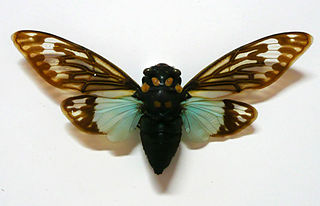 W
WTosena melanoptera is a cicada species from Thailand. It was described by William Lucas Distant in 1878.
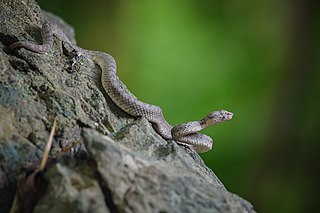 W
WTrimeresurus kanburiensis is a species of pit viper found in only a few areas of Thailand. Common names include: Kanburi pitviper, Kanburian pit viper, and tiger pit viper. Highly venomous, it is an arboreal but heavily built species with a brown or tawny coloration. No subspecies are currently recognized.
 W
WThe waterfall climbing cave fish, also known as the cave angel fish, is a species of troglobitic hillstream loach endemic to Thailand. It reaches a length of 2.8 centimetres (1.1 in) SL. This fish is known for its fins, which can grapple onto terrain, and its ability to climb. This fish is the only known member of its genus. The species has been recorded from eight subterranean sites within a large karst system in Mae Hong Son Province, Thailand. The species has an extent of occurrence of nearly 200 km2, but an area of occupancy of 6 km2; the connectivity of this karst systems is unknown, some caves are definitely connected. The species is found in eight of the caves. It has been recorded from the Susa and Tham Mae Lana. It may also occur in other submerged caves in the area. However, the species has a potential threat of agricultural pollution which could impact the whole karst system, making it one location.